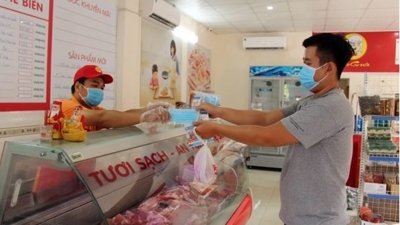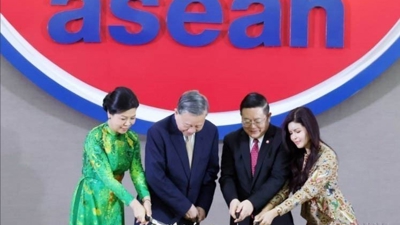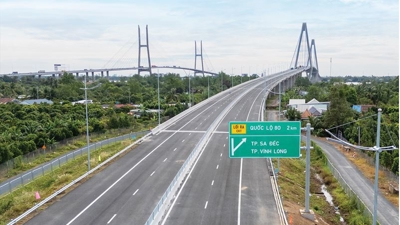Securing trust in policy
A key facet of all economies, Vietnam’s business community is keen to see ongoing comprehensive reform with tangible results.
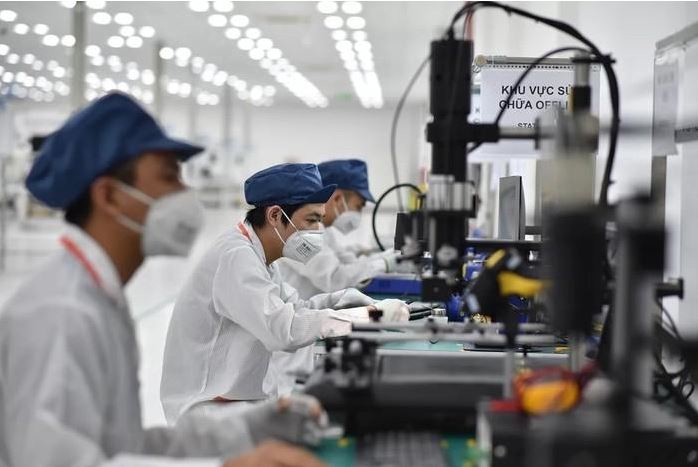
On May 4, the Politburo of the Communist Party of Vietnam passed Resolution No. 68-NQ/TW on the development of the domestic private sector, which is regarded as a high-level commitment to unlocking its potential to achieve double-digit economic growth and secure high-income status by 2045. Turning this vision into reality, however, depends largely on one key factor: businesses’ trust in policy.
At the recent Vietnam Economic Growth Forum 2025, business leaders voiced growing concern that this trust is being undermined by institutional inefficiencies and legal bottlenecks, which require genuine, results-driven reforms. Therefore, they have proposed that reform efforts need to be carried out comprehensively across three main areas: accelerating the drafting of legal documents in a way that aligns closely with real-world business needs and resolving institutional bottlenecks; formulating specific growth plans for each sector with the overarching goal of achieving double-digit national economic growth; and strengthening the implementation of government support and incentive policies for the private business community.
Trapped in administrative procedures
According to Mr. Nguyen Quoc Hiep, Chairman of the Vietnam Association of Construction Contractors (VACC), with construction accounting for 10-12 per cent of GDP, the Land Law 2024 offers new growth opportunities for the real estate and construction sectors compared to the past two years. However, despite revisions, existing regulations still burden construction businesses and indirectly push up property prices. One major concern is land valuation.
He pointed out that land is currently priced based on auction results and vague “market price” principles. One other factor driving land prices is the disjointed legal framework, which prolongs valuation timelines and excludes infrastructure investments from being recognized. Mr. Hiep also emphasized that the legal system is overloaded with inconsistent documents, and review processes often focus on procedural approval rather than the substance, especially for regulations that span multiple ministries.
He also called for the reform of construction pricing regulations. Public projects currently follow State-set pricing norms, while private and FDI projects use market-based pricing. This dual system causes inconsistencies and leads to delayed payments in the construction sector. VACC recommended that the government unify these into a single pricing mechanism.
Mr. Nguyen Van Than, Chairman of the Vietnam Association of Small and Medium Enterprises (VINASME), is of a similar mind. He stressed the role of business associations in representing private sector voices. Alongside revising legal frameworks, he called for administrative reform to eliminate inequality in dialogue between enterprises and authorities, and to end the lingering “ask-give” administrative mentality.
Rethinking growth
Alongside changes in policies and the legal framework, some businesses argue that it may not be feasible for them to achieve double-digit growth purely due to the characteristics of their industries and markets.
According to Mr. Le Tien Truong, Chairman of the Vietnam National Textile and Garment Group (Vinatex), the textile and garment industry posted export value of around $44 billion last year, accounting for 11 per cent of the country’s total exports, while recording a trade surplus of $21 billion. To maintain a 10 per cent annual growth rate over the next five years, the industry would need to expand to $75 billion by 2030.
However, global demand for textiles and garments grew by just 1.8 per cent annually between 2015 and 2024. Domestically, other sectors are increasingly attracting workers, and over the past six years Vietnam’s textile industry has posted a compound annual growth rate (CAGR) of around 6 per cent, with limited space for further workforce expansion.
From the standpoint of global supply and demand and the availability of domestic workers, Mr. Truong noted that if the industry were to pursue extensive growth alone it would be nearly impossible to sustain a consistent 10 per cent export growth rate over the next five years and reach $75-80 billion by 2030.
To meaningfully contribute to double-digit national growth, the textile sector must restructure production based on two key approaches. The first is improving the trade balance by narrowing the gap between imports and exports. The second is boosting workers’ income through higher productivity.
Mr. Truong emphasized that while export turnover might grow only 4-5 per cent annually, reducing import dependency could help raise the trade surplus by 10 per cent. Simultaneously, investments in automation and technological innovation can improve per capita productivity, creating room for wage increases above 10 per cent. If achieved, the sector could still contribute to real GDP growth at the double-digit level, despite modest increases in export value.
While the textile industry looks to restructuring and productivity gains to sustain growth, another key industry - fisheries - is also emerging as a driver of Vietnam’s economic ambition. According to Mr. Nguyen Hoai Nam, General Secretary of the Vietnam Association of Seafood Exporters and Producers (VASEP), the formation of complete domestic supply chains has created a solid foundation for a shift towards high-tech shrimp farming. Each hectare of high-tech shrimp farming requires around VND2 billion ($76,600) in investment and can generate up to VND3 billion ($115,000) in revenue. If scaled to 100,000 hectares, this could make a substantial contribution to GDP.
To support the transition, VASEP proposed interest rate support of 2 per cent for the first three years and 5 per cent thereafter, comparable to incentives in other shrimp-exporting countries. It also called for easing land use restrictions and reclaiming idle land for aquaculture, both to boost rural jobs and earn foreign exchange.
Mr. Nam also stressed the importance of deepening access to export markets such as South Korea, where current tariff quotas limit growth. With traceable, green production now widespread, Vietnam’s seafood industry is well-positioned to tap into global demand and contribute to the country’s double-digit growth goal.
Support for businesses
While restructuring industries for more efficient growth is necessary, it also requires upfront investment. To address this, Mr. Truong emphasized the need for State support, suggesting tax incentives to businesses that achieve growth in their trade surplus of 10 per cent or more.
For example, if a company’s trade surplus increases 11 per cent year-on-year, the 1 per cent surplus beyond the 10 per cent threshold could be returned via tax credits or corporate income tax reductions. Likewise, if wages increase by over 10 per cent, the excess could also be eligible for tax relief. “Wage hikes only contribute to national growth without tangible returns for businesses,” he noted.
Mr. Nguyen Anh Duc, Chairman of the Association of Vietnam Retailers, added that consumer confidence in Vietnam is currently at the lowest ever level, indicating widespread pessimism. He argued that wage increases could help rebuild consumer confidence and shift spending behavior. For business confidence, the focus should be on enterprise health.
He also pointed out that the current 2 per cent VAT reduction has not yielded a strong impact, largely due to slow implementation. Faster, more targeted tax measures are needed to stimulate cash flow and demand.
Beyond tax incentives, representatives from the business community also called for government support in industry-specific technological innovation, encouraging businesses to modernize production.
Additionally, Mr. Duc highlighted the potential of repurposing underutilized infrastructure left behind by administrative streamlining. Instead of letting former public office spaces sit idle, they suggested converting some into local trade promotion centers or schools and hospitals.


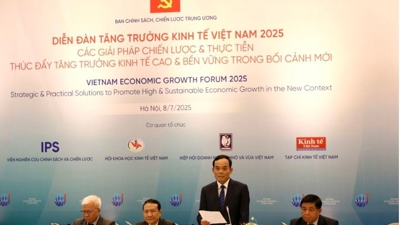
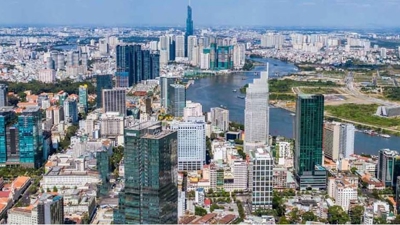
![[Interactive]: Economic overview - July 2025](https://media.vneconomy.vn/400x225/images/upload/2025/08/06d54ac72a-8805-4fcc-b167-1219b8e73c8d.png)
